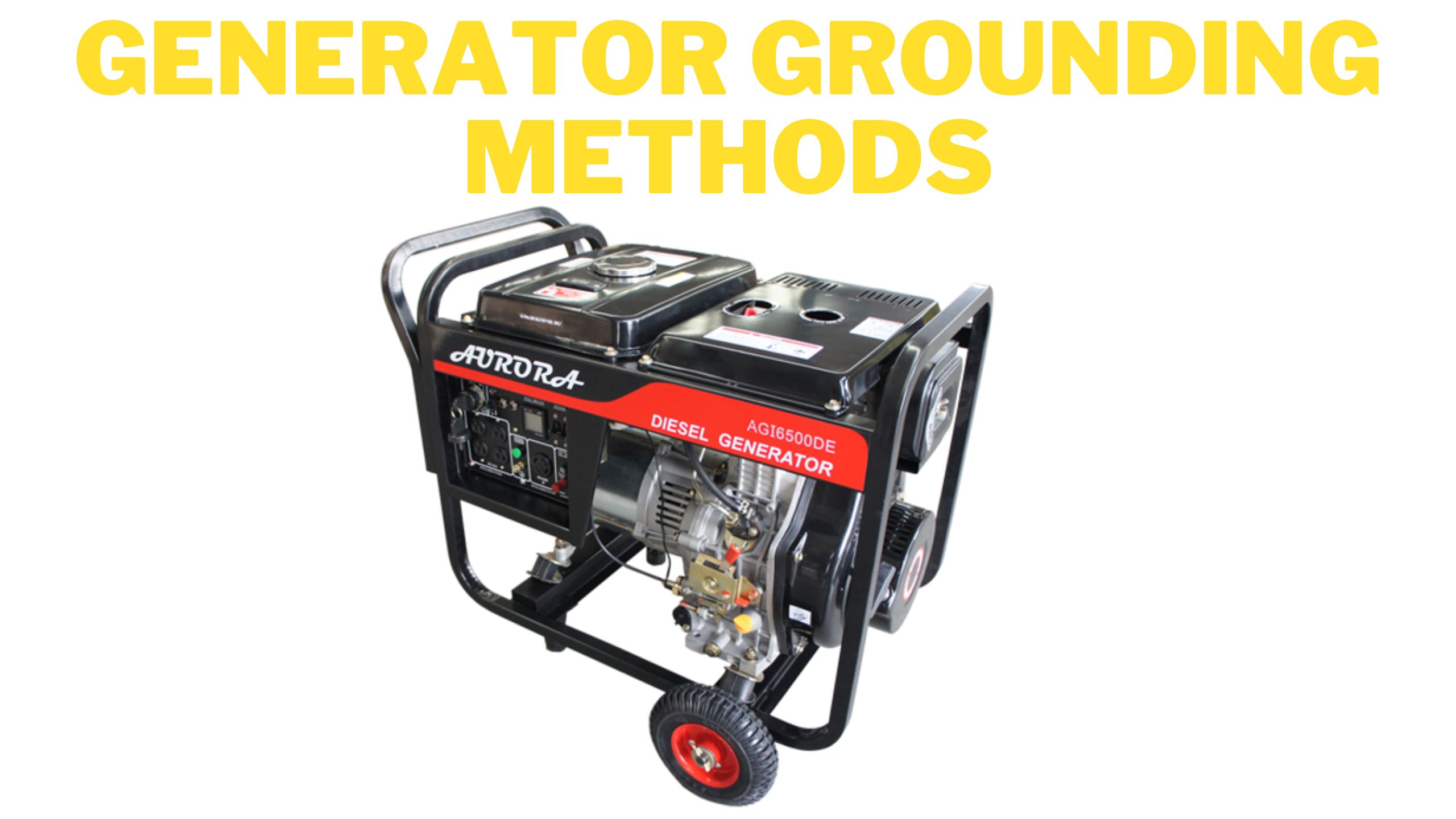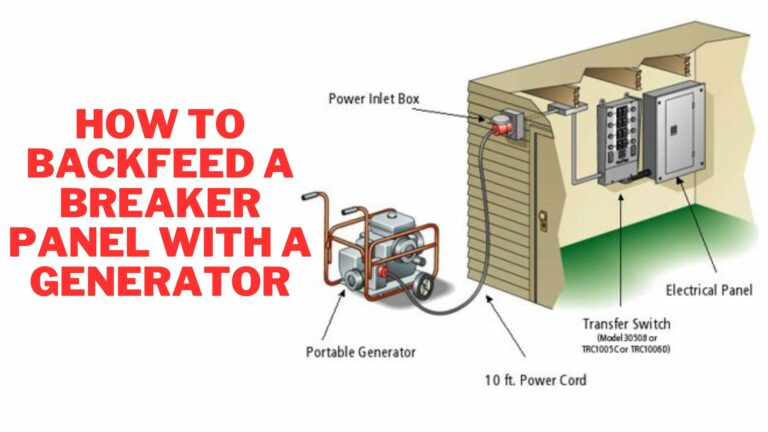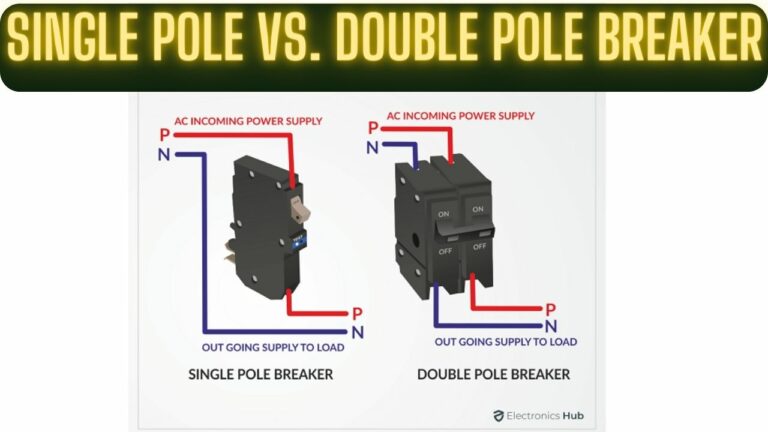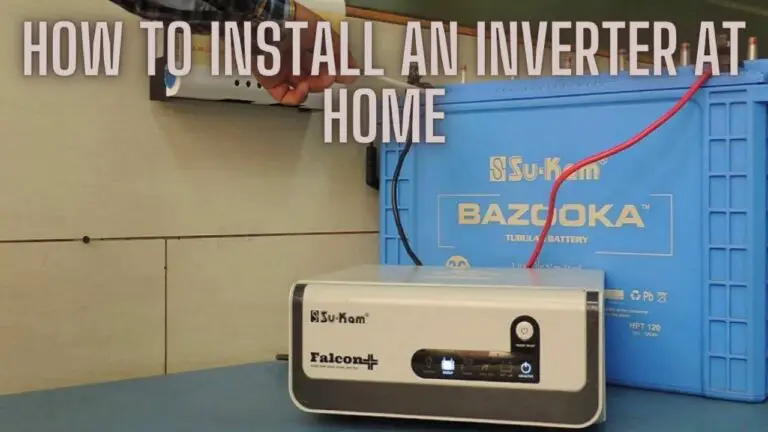Generator Grounding Methods
Introduction
Generator grounding is a critical aspect of electrical system design and operation, ensuring safety, reliability, and proper functionality. Grounding refers to the intentional connection of electrical systems to the earth or a reference ground, providing a path for fault currents to safely dissipate. In this article, we will talk about the generator grounding methods.
Generators play a pivotal role in providing backup power during outages and sustaining operations in various industries, including commercial buildings, manufacturing facilities, hospitals, and data centers. However, without proper grounding, generators can pose significant risks to personnel, equipment, and the surrounding environment.
Importance of Proper Grounding
The importance of proper grounding in electrical systems cannot be overstated. Here are several key reasons why proper grounding is crucial:
- Safety: Proper grounding provides a path for fault currents to safely flow to the earth, reducing the risk of electric shock to personnel and preventing electrical fires. Without effective grounding, fault currents can energize equipment enclosures and other conductive surfaces, creating hazardous conditions for anyone in contact with them.
- Equipment Protection: Grounding helps protect electrical equipment from damage caused by transient overvoltages, lightning strikes, and fault currents. By providing a low-impedance path to dissipate excess energy, grounding helps prevent insulation breakdown, component failure, and costly downtime.
- System Reliability: Grounding contributes to the overall reliability of electrical systems by stabilizing voltages, minimizing electromagnetic interference, and improving the performance of protective devices such as circuit breakers and fuses. Proper grounding reduces the likelihood of voltage surges and ensures that sensitive electronic equipment operates within safe operating limits.
- Compliance with Regulations: Adherence to relevant codes, standards, and regulations governing grounding practices is essential for ensuring legal compliance and liability protection. Regulatory requirements vary depending on the type of facility, industry standards, and local building codes, emphasizing the need for proper grounding design and installation.
- Personnel Protection: Grounding safeguards personnel working on or near electrical equipment by reducing the risk of accidental contact with energized parts. Ground fault protection devices, such as ground fault circuit interrupters (GFCIs) and equipment grounding conductors, help detect and isolate faults quickly, minimizing the potential for injury or fatality.
- Environmental Protection: Proper grounding helps prevent electrical pollution and environmental contamination by containing fault currents within the electrical system and preventing their spread to adjacent structures or the surrounding environment. Grounding also facilitates the safe dissipation of static electricity, reducing the risk of sparking and ignition in hazardous locations.
In summary, proper grounding is essential for ensuring the safety, reliability, and compliance of electrical systems. By implementing effective grounding practices, stakeholders can protect personnel, equipment, and the environment from electrical hazards while promoting operational efficiency and regulatory compliance.
Types of Grounding Methods
a. Direct Grounding:
- Direct grounding, also known as low-resistance grounding, involves connecting the neutral point of the electrical system directly to the earth.
- This method ensures a low-impedance path for fault currents to flow to the ground, minimizing the risk of electrical shock and equipment damage.
- Direct grounding is commonly used in low-voltage electrical systems and provides effective fault protection.
b. Resistance Grounding:
- Resistance grounding involves inserting a resistor between the neutral point of the electrical system and the ground.
- The resistor limits fault current magnitude, reducing the risk of electrical damage while still providing a path for fault current to dissipate safely.
- Resistance grounding systems are often used in medium-voltage electrical systems to limit ground fault currents and mitigate voltage disturbances.
c. Reactance Grounding:
- Reactance grounding utilizes inductive or capacitive elements to limit fault currents while maintaining system stability.
- Inductive reactance grounding involves connecting an inductor (usually a zig-zag transformer) between the neutral point and ground, limiting fault current magnitude.
- Capacitive reactance grounding uses capacitors to create a capacitive reactance path to the ground, providing similar fault current limitations.
- Reactance grounding methods are suitable for medium to high-voltage electrical systems and offer improved fault protection compared to solidly grounded systems.
d. Solidly Grounded Systems:
- Solidly grounded systems directly connect the neutral point of the electrical system to the ground without any impedance in the path.
- These systems provide low-impedance fault current paths, ensuring effective fault protection and stable operation.
- Solidly grounded systems are commonly used in low-voltage distribution networks and industrial facilities where rapid fault detection and clearing are essential.
e. Ungrounded Systems:
- Ungrounded systems isolate the neutral point of the electrical system from the ground, eliminating a direct path for fault currents to flow to the ground.
- Ungrounded systems reduce the likelihood of phase-to-ground faults but require specialized monitoring and detection techniques to identify and address faults promptly.
- These systems are often employed in critical applications where uninterrupted power supply is paramount, such as healthcare facilities and data centers.
f. High-Resistance Grounding:
- High-resistance grounding involves connecting a resistor between the neutral point and ground with a high resistance value.
- This method limits fault current to a low level, typically below the rated capacity of the electrical system, while still providing ground fault detection.
- High-resistance grounding is suitable for applications where limiting fault current magnitude is essential to avoid equipment damage and operational disruptions.
Each grounding method offers distinct advantages and considerations based on the specific requirements of the electrical system, such as voltage level, fault protection needs, and operational constraints. Proper selection and implementation of the appropriate grounding method are critical to ensuring the safety, reliability, and performance of the electrical system.
Comparison of Grounding Methods
- Fault Current Handling:
- Direct Grounding: Provides a low-impedance path for fault currents, allowing high fault currents to flow directly to the ground for rapid fault clearing.
- Resistance Grounding: Limits fault currents to a predetermined level, reducing stress on equipment and minimizing damage during faults.
- Reactance Grounding: Limits fault currents while providing improved system stability compared to resistance grounding.
- Solidly Grounded Systems: Offers low-impedance fault paths for rapid fault clearing, but fault currents can be very high, causing significant damage.
- Ungrounded Systems: Minimizes phase-to-ground faults but requires specialized detection and mitigation techniques for fault isolation.
- High-Resistance Grounding: Limits fault currents to a low level, reducing equipment damage and operational disruptions during faults.
- Safety:
- Direct Grounding: Provides effective protection against electric shock by quickly dissipating fault currents to the ground.
- Resistance Grounding: Reduces the risk of electric shock by limiting fault current magnitude to safe levels.
- Reactance Grounding: Offers improved safety compared to solidly grounded systems by limiting fault currents and minimizing voltage disturbances.
- Solidly Grounded Systems: Provides robust fault protection but may pose a higher risk of electric shock due to high fault currents.
- Ungrounded Systems: Reduces the risk of electric shock during phase-to-ground faults but requires specialized monitoring for fault detection.
- High-Resistance Grounding: Enhances safety by limiting fault currents to low levels, reducing the risk of electric shock and equipment damage.
- System Stability:
- Direct Grounding: Provides stable operation with low impedance fault paths, minimizing voltage disturbances and ensuring system stability.
- Resistance Grounding: Offers stable operation with controlled fault currents, reducing the likelihood of voltage fluctuations and equipment tripping.
- Reactance Grounding: Enhances system stability by limiting fault currents and mitigating voltage disturbances during faults.
- Solidly Grounded Systems: Generally stable but may experience voltage fluctuations and system instability during fault conditions.
- Ungrounded Systems: Requires careful monitoring and mitigation of transient overvoltages to maintain system stability.
- High-Resistance Grounding: Provides stable operation with limited fault currents, minimizing voltage disturbances and system instability.
- Equipment Protection:
- Direct Grounding: Protects equipment by quickly clearing fault currents and minimizing damage during faults.
- Resistance Grounding: Reduces stress on equipment by limiting fault current magnitude and mitigating damage during faults.
- Reactance Grounding: Offers improved equipment protection compared to solidly grounded systems by limiting fault currents and reducing stress on equipment.
- Solidly Grounded Systems: Provides robust fault protection but may cause significant equipment damage due to high fault currents.
- Ungrounded Systems: Minimizes equipment damage during phase-to-ground faults but requires specialized fault detection and isolation techniques.
- High-Resistance Grounding: Limits equipment damage by reducing fault currents to low levels during faults.
- Maintenance Requirements:
- Direct Grounding: Generally low maintenance, requiring periodic inspection of grounding connections and conductors.
- Resistance Grounding: Requires occasional testing of grounding resistors and monitoring of fault currents.
- Reactance Grounding: Similar maintenance requirements to resistance grounding, with periodic testing of grounding components and fault current monitoring.
- Solidly Grounded Systems: Low maintenance but may require inspection and testing of grounding connections and conductors.
- Ungrounded Systems: Requires specialized monitoring and periodic testing of insulation resistance and fault detection systems.
- High-Resistance Grounding: Requires periodic testing and maintenance of grounding resistors and fault detection systems.
Overall, the choice of grounding method depends on factors such as system voltage, fault protection requirements, safety considerations, and operational constraints. Each grounding method offers distinct advantages and considerations, and proper selection is crucial to ensuring the safety, reliability, and performance of the electrical system.
Selection Criteria for Grounding Methods
Selecting the appropriate grounding method for an electrical system involves considering various factors to ensure safety, reliability, and compliance with regulatory requirements. Here are some key selection criteria:
- System Voltage: The voltage level of the electrical system influences the choice of grounding method. For low-voltage systems (typically up to 1000V), direct grounding or resistance grounding may be suitable. For medium to high-voltage systems, reactance grounding or solidly grounded systems are often preferred.
- Fault Current Handling Requirements: Consider the magnitude of fault currents that the grounding method needs to handle. Direct grounding provides a low-impedance path for high fault currents, while resistance grounding limits fault currents to a predetermined level. Reactance grounding and solidly grounded systems also handle fault currents, but they may have different characteristics regarding fault current limitation and system stability.
- System Stability: Evaluate the impact of the grounding method on system stability. Some methods, such as solidly grounded systems and direct grounding, offer stable operation with low-impedance fault paths. Others, like reactance grounding, provide enhanced stability by limiting fault currents and mitigating voltage disturbances.
- Safety Considerations: Assess the safety implications of each grounding method, particularly regarding protection against electric shock and equipment damage during faults. Methods that limit fault currents, such as resistance grounding and high-resistance grounding, may offer improved safety compared to solidly grounded systems.
- Equipment Protection: Consider the effect of fault currents on electrical equipment and the need for equipment protection. Grounding methods that limit fault currents, such as resistance grounding and high-resistance grounding, reduce stress on equipment and minimize damage during faults.
- Regulatory Compliance: Ensure that the selected grounding method complies with relevant codes, standards, and regulations. Different industries and jurisdictions may have specific requirements for grounding practices, so it’s essential to verify compliance with local regulations.
- Operational Requirements: Take into account the operational needs and constraints of the electrical system. For example, ungrounded systems may be suitable for critical applications where uninterrupted power supply is essential, but they require specialized monitoring and fault detection techniques.
- Maintenance Considerations: Evaluate the maintenance requirements associated with each grounding method. Some methods, such as direct grounding, may require minimal maintenance, while others, like resistance grounding and high-resistance grounding, may need periodic testing and inspection of grounding components.
- Cost: Consider the upfront and ongoing costs associated with each grounding method, including installation, equipment, maintenance, and potential downtime. Evaluate the long-term benefits and trade-offs to determine the most cost-effective solution for the specific application.
By carefully evaluating these selection criteria, stakeholders can choose the grounding method that best meets the needs of their electrical system in terms of safety, reliability, compliance, and cost-effectiveness. Consulting with electrical engineers, experts, and regulatory authorities can also provide valuable insights into selecting the most appropriate grounding method for a particular application.
Installation Procedures
Installation procedures for grounding systems vary depending on the specific method chosen and the requirements of the electrical system. Here’s a general outline of installation procedures for a typical grounding system:
- System Design:
- Develop a comprehensive grounding system design based on the selected grounding method, system voltage, fault current requirements, and regulatory compliance.
- Determine the location of grounding electrodes, conductors, and grounding devices such as resistors or transformers.
- Equipment Selection:
- Select appropriate grounding electrodes, such as ground rods, plates, or grids, based on soil conditions, resistivity, and system requirements.
- Choose grounding conductors of suitable size, material, and length to provide low-impedance paths for fault currents.
- Installation of Grounding Electrodes:
- Prepare the installation site by clearing vegetation, removing debris, and ensuring adequate access for equipment and personnel.
- Install grounding electrodes according to the manufacturer’s recommendations and local codes, ensuring proper depth, spacing, and alignment.
- Drive ground rods or install grounding plates in locations with sufficient soil moisture and conductivity to achieve low resistance to ground.
- Connection of Grounding Conductors:
- Install grounding conductors between the grounding electrodes and the electrical system’s neutral point or grounding bus.
- Use suitable connectors, clamps, and bonding techniques to ensure secure and low-resistance connections.
- Minimize bends, splices, and discontinuities in grounding conductors to reduce impedance and improve fault current paths.
- Installation of Grounding Devices:
- If applicable, install grounding devices such as resistors or reactors to implement specific grounding methods like resistance grounding or reactance grounding.
- Connect grounding devices according to manufacturer’s instructions and ensure proper sizing and ratings for fault current limitation.
- Bonding to Equipment and Structures:
- Bond grounding conductors to electrical equipment enclosures, metallic structures, and other conductive components to provide equipotential grounding.
- Use bonding jumpers, straps, or conductors to establish low-resistance connections and minimize voltage differentials between bonded elements.
- Testing and Verification:
- Perform initial testing of the grounding system using specialized equipment such as ground resistance testers or clamp-on ammeters to verify proper installation and functionality.
- Measure ground resistance values, fault current paths, and continuity of grounding conductors to ensure compliance with design specifications and regulatory requirements.
- Record test results and document installation details for future reference and maintenance purposes.
- Labeling and Documentation:
- Clearly label grounding electrodes, conductors, and devices with appropriate identification markers, tags, or signage for easy identification and maintenance.
- Prepare as-built drawings, installation records, and documentation summarizing the grounding system design, installation procedures, and test results for archival and reference purposes.
- Training and Maintenance:
- Provide training to personnel responsible for operating, maintaining, and inspecting the grounding system to ensure a proper understanding of its function and requirements.
- Establish a regular maintenance schedule for inspecting, testing, and maintaining the grounding system to ensure continued effectiveness and compliance with safety standards.
By following these installation procedures and best practices, stakeholders can effectively implement grounding systems that provide reliable fault protection, ensure safety, and comply with regulatory requirements for electrical systems. It’s essential to consult with qualified professionals, such as electrical engineers or technicians, to ensure proper design, installation, and maintenance of grounding systems.
Maintenance and Testing
Maintenance and testing of grounding systems are critical to ensure their ongoing effectiveness in providing fault protection, ensuring safety, and maintaining compliance with regulatory standards. Here’s a guide outlining maintenance and testing procedures for grounding systems:
- Scheduled Inspections:
- Conduct regular visual inspections of grounding electrodes, conductors, and connections to check for signs of corrosion, damage, or deterioration.
- Inspect equipment bonding connections to ensure they are secure and free from corrosion or degradation.
- Verify that grounding devices, such as resistors or reactors, are operating within their specified parameters and are free from damage.
- Ground Resistance Testing:
- Perform periodic ground resistance testing using specialized equipment such as ground resistance testers or clamp-on ammeters.
- Measure the resistance of grounding electrodes to the earth to ensure they meet design specifications and regulatory requirements.
- Record and document ground resistance values for comparison with previous test results and to track changes over time.
- Continuity Testing:
- Test the continuity of grounding conductors and bonding connections using continuity testers or multimeters.
- Verify that grounding conductors are intact, securely connected, and free from breaks or discontinuities that could increase impedance.
- Check for proper bonding between equipment enclosures, metallic structures, and grounding conductors to maintain equipotential grounding.
- Insulation Resistance Testing:
- Conduct insulation resistance testing to assess the integrity of insulation between grounding conductors and other conductive elements.
- Measure insulation resistance using insulation resistance testers or megohmmeters to detect potential insulation breakdown or deterioration.
- Ensure that insulation resistance values meet applicable standards and are sufficient to prevent leakage currents and electrical hazards.
- Fault Current Testing:
- Test the fault current paths of the grounding system to verify their ability to safely conduct fault currents to ground.
- Use specialized equipment such as clamp-on ammeters or current injection testers to simulate fault conditions and measure fault current levels.
- Confirm that fault currents are within acceptable limits and that the grounding system can effectively clear faults without causing damage to equipment or personnel.
- Documentation and Record-Keeping:
- Maintain comprehensive records of maintenance activities, testing results, and any corrective actions taken to address identified issues.
- Document ground resistance values, continuity test results, insulation resistance measurements, and fault current testing data for each grounding system component.
- Keep records organized and easily accessible for reference during future inspections, audits, or troubleshooting efforts.
- Corrective Maintenance:
- Address any identified deficiencies or issues promptly through corrective maintenance actions.
- Repair or replace damaged grounding electrodes, conductors, or connections as necessary to restore the integrity and functionality of the grounding system.
- Conduct follow-up testing and verification to ensure that corrective actions have been effective in resolving identified problems.
- Training and Education:
- Provide training to personnel responsible for performing maintenance and testing activities on grounding systems.
- Ensure that personnel are familiar with relevant standards, procedures, and safety precautions for working with electrical systems and grounding equipment.
- Encourage ongoing professional development and certification to keep abreast of advancements in grounding system maintenance and testing practices.
By implementing a proactive maintenance and testing program for grounding systems, stakeholders can identify and address potential issues before they compromise system performance or safety. Regular inspections, testing, and documentation are essential components of ensuring the continued reliability and effectiveness of grounding systems in protecting personnel, equipment, and facilities from electrical hazards.
Case Studies
Case Study 1: Hospital Electrical System Upgrade
Background:
A large hospital facility undergoing a major electrical system upgrade faced challenges related to grounding and fault protection. The existing electrical infrastructure was outdated and lacked adequate grounding provisions, increasing the risk of electrical hazards and equipment damage during faults. The hospital sought to modernize its electrical system while ensuring compliance with stringent safety standards and regulatory requirements.
Solution:
The hospital collaborated with electrical engineering consultants to design and implement a comprehensive grounding system upgrade. The project involved the following key components:
- Grounding System Design: Engineers conducted a thorough assessment of the hospital’s electrical distribution network and identified areas for improvement in grounding and fault protection. They designed a new grounding system that incorporated advanced grounding methods tailored to the hospital’s specific needs, including resistance grounding for critical areas and high-resistance grounding for sensitive equipment.
- Installation and Commissioning: The engineering team oversaw the installation of grounding electrodes, conductors, and grounding devices according to the design specifications. They ensured proper bonding between equipment enclosures, metallic structures, and grounding conductors to maintain equipotential grounding. Commissioning tests were performed to verify the integrity and functionality of the new grounding system before it was put into service.
- Testing and Verification: After installation, the grounding system underwent rigorous testing to assess its performance and compliance with safety standards. Ground resistance testing, continuity testing, insulation resistance testing, and fault current testing were conducted to validate the effectiveness of the grounding system in providing fault protection and ensuring personnel safety.
Outcome:
The hospital’s electrical system upgrade successfully addressed the grounding and fault protection challenges, enhancing safety, reliability, and compliance with regulatory requirements. The modernized grounding system provided robust fault protection, minimized the risk of electrical hazards, and protected critical medical equipment from damage during faults. The project demonstrated the importance of proactive planning, engineering expertise, and thorough testing in ensuring the effectiveness and reliability of grounding systems in healthcare facilities.
Case Study 2: Industrial Plant Grounding Improvement
Background:
An industrial manufacturing plant experienced frequent equipment failures and operational disruptions attributed to inadequate grounding and poor fault protection. The plant’s existing grounding system was outdated and unable to handle the high fault currents generated by industrial machinery, leading to equipment damage and production downtime. The plant management recognized the need to upgrade the grounding system to improve reliability, safety, and productivity.
Solution:
The plant engaged electrical contractors specializing in industrial electrical systems to redesign and upgrade the grounding infrastructure. The project involved the following steps:
- Grounding System Assessment: Electrical engineers conducted a comprehensive assessment of the plant’s electrical distribution system, including grounding provisions, equipment bonding, and fault protection measures. They identified deficiencies in the existing grounding system and developed a plan to address them.
- Grounding System Upgrade: The engineering team designed a new grounding system tailored to the plant’s industrial environment, incorporating advanced grounding methods such as resistance grounding and reactance grounding. They specified the installation of larger grounding conductors, additional grounding electrodes, and enhanced bonding techniques to improve fault current handling and equipment protection.
- Installation and Testing: Skilled electricians installed the upgraded grounding system according to the engineering design, ensuring proper grounding electrode placement, conductor sizing, and bonding connections. They conducted comprehensive testing, including ground resistance testing, continuity testing, and fault current testing, to verify the performance and effectiveness of the new grounding infrastructure.
Outcome:
The industrial plant’s grounding improvement project resulted in significant improvements in equipment reliability, safety, and operational efficiency. The upgraded grounding system effectively mitigated equipment failures caused by electrical faults, reducing downtime and maintenance costs. The plant’s management recognized the value of investing in modern grounding technology to safeguard critical assets and ensure uninterrupted production processes.
These case studies highlight the importance of proactive grounding system design, thorough testing, and expert installation in addressing electrical challenges and improving safety and reliability in diverse industrial and commercial settings. By prioritizing proper grounding and fault protection measures, organizations can mitigate risks, enhance operational resilience, and protect personnel and assets from electrical hazards.
FAQS
- What is generator grounding, and why is it important? Generator grounding is the process of connecting the frame of a generator to the earth to ensure safety by providing a path for fault currents to flow safely to the ground. It’s crucial for protecting equipment and personnel from electrical shocks and minimizing damage during fault conditions.
- What are the different methods of generator grounding? There are mainly three methods: solidly grounded, impedance grounded, and ungrounded systems. Solidly grounded systems directly connect the generator frame to the ground. Impedance grounded systems use a resistor or reactor to limit fault current. Ungrounded systems don’t have a direct connection to ground but may use ground fault detection systems.
- What are the advantages and disadvantages of solidly grounded systems? Solidly grounded systems provide fast fault detection and can handle high fault currents efficiently. However, they can cause significant damage during faults and may lead to longer downtimes for repairs.
- When is impedance grounding preferred over solid grounding? Impedance grounding is often preferred in systems where limiting fault currents is important, such as in critical facilities where continuity of service is essential. It helps reduce damage to equipment and minimizes disruptions while still providing some fault protection.
- What safety measures should be taken with generator grounding? Regular inspection and maintenance of grounding systems are essential to ensure their effectiveness. Personnel should be trained in proper grounding procedures, and all safety protocols should be followed during installation, maintenance, and operation.
- Can ungrounded systems be used in all applications? Ungrounded systems are not suitable for all applications due to the potential risk of insulation breakdown and difficulty in detecting ground faults. They are typically used in specific industrial applications where continuous operation is critical, and the risk of insulation failure is low.
- How do I choose the right grounding method for my generator? The selection of the grounding method depends on various factors such as the application, system requirements, safety standards, and regulatory requirements. Consulting with electrical engineers and professionals experienced in generator installations is crucial for determining the most suitable grounding method for your specific needs.
Conclusion
In conclusion, grounding systems play a pivotal role in ensuring the safety, reliability, and compliance of electrical installations across various industries and applications. Through this exploration of grounding methods, selection criteria, installation procedures, maintenance practices, and real-world case studies, several key insights emerge:
- Safety and Reliability: Proper grounding is essential for protecting personnel, equipment, and facilities from electrical hazards, minimizing the risk of electric shock, equipment damage, and operational disruptions during faults.
- Selection Considerations: The choice of grounding method depends on factors such as system voltage, fault current handling requirements, safety considerations, regulatory compliance, and operational needs. Each grounding method offers distinct advantages and trade-offs, requiring careful evaluation to determine the most appropriate solution for specific applications.
- Installation Best Practices: Implementing grounding systems involves meticulous planning, engineering expertise, and adherence to industry standards and regulations. Proper installation techniques, including grounding electrode placement, conductor sizing, bonding methods, and testing procedures, are essential for ensuring the effectiveness and reliability of grounding systems.
- Maintenance and Testing: Regular maintenance and testing are critical to ensuring the ongoing effectiveness of grounding systems in providing fault protection, ensuring safety, and maintaining compliance with regulatory standards. Scheduled inspections, ground resistance testing, continuity testing, insulation resistance testing, and fault current testing help identify and address potential issues before they compromise system performance or safety.
- Real-World Applications: Case studies illustrate the practical application of grounding systems in diverse settings, including healthcare facilities, industrial plants, and commercial buildings. These examples demonstrate the importance of proactive planning, engineering expertise, and thorough testing in addressing electrical challenges and improving safety and reliability.
Overall, grounding systems are fundamental components of electrical infrastructure, serving as the foundation for safe and reliable operation. By prioritizing proper grounding practices, organizations can mitigate risks, enhance operational resilience, and safeguard personnel and assets from electrical hazards in today’s dynamic and interconnected world.








